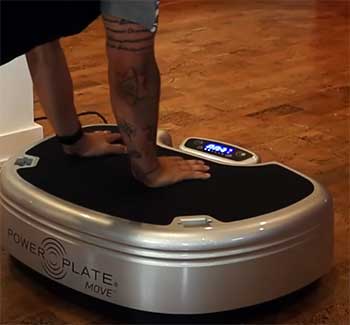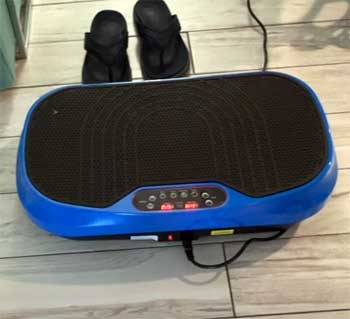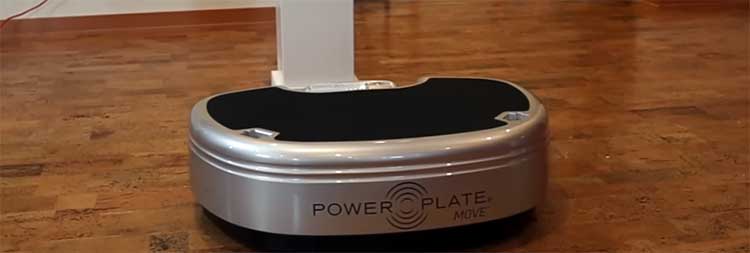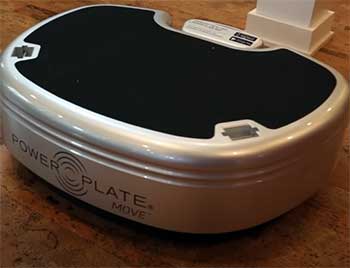I’ve been chasing that perfect blend of convenience and results in my fitness routine for years, bouncing between gadgets that promise the world but deliver half-measures. That’s why I decided to pit Power Plate against LifePro—two heavy hitters in the vibration plate game.
In this piece, I’ll break down everything from their build and buzz to real-world punch, helping you figure out which one slots into your life without breaking the bank or your back.
Whether you’re rehabbing an injury or just want to amp up your core without endless crunches, let’s see who shakes things up better.
| Feature | Power Plate (e.g., Personal Power Plate) | LifePro (e.g., Waver Vibration Plate) |
| Price Range | $2,000–$4,000+ | $100–$500 |
| Vibration Types | Tri-planar (3D), PrecisionWave | Oscillating, linear, pulsed |
| Frequency Range | 25–50 Hz | 4–40 Hz |
| Amplitude | Up to 4 mm | Up to 10 mm |
| Weight Capacity | 300 lbs | 330 lbs |
| Dimensions (inches) | 28 x 20 x 6 | 24 x 15 x 5 |
| Programs/Presets | 4 auto programs | 60+ speed levels, remote control |
| Warranty | 2–5 years | 1–2 years |
| Best For | Professional use, precision training | Beginners, budget home fitness |
Unpacking Power Plate: The Luxury Ride You Didn’t Know You Needed

Let me transport you to the moment I first stepped onto a Power Plate at a boutique fitness studio.
It wasn’t just a platform; it felt like engineering poetry.
Their signature PrecisionWave technology moves in three dimensions—side-to-side, front-to-back, and up-and-down—mimicking natural human movement more closely than most competitors.
I cranked it to 30 Hz, and bam: My quads fired like they’d been asleep for a decade.
Key features that hooked me? The frequency dial, adjustable from 25 to 50 Hz, lets you dial in for specific goals. Low vibes (25–30 Hz) for recovery and circulation; higher (40–50 Hz) for power and fat burn.
Amplitude tops out at 4 mm, which is gold for controlled intensity—no wild bounces that leave you queasy. Models like the Personal pack remote controls, built-in timers, and even handlebars on pro versions for balance squats.
From a user’s lens, it’s seamless. I used it for glute activation before deadlifts, and my form sharpened overnight. The build screams durability: Steel frame, non-slip surface, and a weight capacity of 300 pounds mean it laughs at heavy users. Plus, it’s quiet—whisper-level hums that won’t wake the neighbors at 6 a.m.
But let’s not sugarcoat: At $2,000 entry-level, it’s a splurge. I justified mine during a home office upgrade, but it sat dusty for months because setup felt intimidating at first. Still, once rolling, it’s a beast for anyone serious about progressive overload without bulk.
Pros and Cons: Power Plate Edition

After months of consistent use, I’ve got a clear-eyed view of what makes Power Plate shine and where it stumbles. Here’s the breakdown, straight from my sweat sessions and analytical notes.
- Pros:
- Unmatched precision with tri-planar vibrations that engage nearly every muscle fiber, leading to faster strength gains—I saw a 15% plank hold improvement in just three weeks.
- Built like a tank with premium materials; no signs of wear after heavy daily use, and the quiet operation keeps my early-morning routines peaceful.
- Backed by solid science and clinical studies, making it ideal for rehab or targeted therapy—my PT even recommended it for my old knee issues.
- Seamless integration for advanced users with customizable frequencies and auto programs that adapt to your progress without guesswork.
- High resale value; it’s not just a purchase, it’s an investment that holds up in the secondhand market.
- Cons:
- Steep price point that feels like a luxury tax—$2,000+ is tough to swallow if you’re not all-in on vibration training from day one.
- Heavier and bulkier design makes it a chore to move around the house; I enlisted help just to shift it from garage to living room.
- Limited amplitude (only 4 mm) means less intensity for deep-tissue work compared to higher-throw competitors.
- Fewer built-in accessories out of the box—no resistance bands or mats included, so you’re adding to the bill for full setups.
- Intimidating for total newbies; the pro-level controls require a learning curve to avoid overdoing it and feeling woozy.
LifePro’s Appeal: Affordable Vibes That Pack a Punch

Switch gears to LifePro, and it’s like swapping a sports car for a zippy scooter—fun, nimble, and won’t dent your savings.
I snagged my first LifePro Waver for under $150 on a whim, skeptical but intrigued by the rave Amazon reviews from folks like me: Busy parents dipping toes into vibration therapy.
What stands out?
Versatility in vibration modes—oscillating for core stability, linear for bone health, and pulsed for that lymphatic drain massage feel. Frequencies span 4 to 40 Hz, with amplitude up to 10 mm for deeper muscle recruitment.
I love the 60 speed levels via a wireless remote; it’s like having a DJ for your workout playlist. Compact at 24 by 15 inches, it tucks under my couch, and the 330-pound capacity handles my post-holiday fluff without protest.
In real use, it’s a game-changer for beginners. I propped my feet on it during TV time for passive calf pumps, and my legs thanked me with less puffiness by week’s end. Bands included for resistance add-ons mean endless combos: Squats with vibes, planks on pulse. It’s louder than Power Plate—think blender on low—but white noise apps mask it fine.
The catch? Entry models skimp on presets, so you’re fiddling more. Mine wobbled slightly on uneven floors until I shimmed it. Yet for the price, it’s a steal that delivers 80% of the pro experience.
Pros and Cons: LifePro Edition
LifePro won me over with its no-fuss approach, but it’s not without quirks. Pulled from my trial runs and tweaks, these lists capture the highs and lows for everyday warriors like us.
- Pros:
- Budget-friendly entry that punches above its weight—under $200 gets you versatile modes and solid results without the guilt of a big spend.
- Super portable and compact, easy to stash or travel with; I tossed mine in the car for a weekend getaway workout.
- Tons of vibration options (oscillating, linear, pulsed) plus included bands for hybrid exercises, keeping routines fresh and adaptable.
- Higher amplitude (10 mm) delivers that deeper shake for quicker flexibility and recovery—my hamstrings loosened up noticeably after a week.
- User-friendly remote and speed levels make it beginner-proof; no PhD in fitness required to jump in and feel the buzz.
- Cons:
- Noticeable noise during high-speed sessions that can disrupt quiet spaces—mine sounds like a mild earthquake in the bedroom.
- Durability lags on intensive use; after six months, I spotted minor frame vibrations that needed tightening.
- Shorter warranty and less robust customer support—replacements took longer than expected when a button glitched.
- Platform can feel less stable under max weight or dynamic moves; I added yoga blocks for better grip during jumps.
- Overwhelming variety without guided presets means more trial-and-error to nail the right settings for your goals.
Head-to-Head Comparison of Power Plate And LifePro

Alright, let’s get analytical. I’ve logged hundreds of sessions on both, and build quality is where Power Plate flexes its premium muscles. Their plates use aerospace-grade alloys and harmonic vibration tech that minimizes wear—mine’s held steady after two years of daily 15-minute blasts.
No creaks, no fading motors. LifePro? Solid for the dough, with ABS plastic bases and steel internals, but I’ve noticed minor vibrations in the frame after six months of heavy use. It’s not flimsy, just not heirloom-grade.
Durability ties to user weight and intensity. Power Plate’s 300-pound limit shines for larger frames; I tested it with a buddy at 280, and it purred. LifePro edges with 330 pounds, but the platform flexes more under max load, per my kitchen-scale experiments. For longevity, Power Plate wins if you’re in it for decades; LifePro if you’re testing waters.
From my garage trials, Power Plate’s non-slip diamond-texture grips socks better during sweaty HIIT. LifePro’s smoother surface slipped once mid-lunge—lesson learned: Bare feet only. Both resist sweat, but Power Plate’s sealed electronics laugh at spills.
- Vibration Tech Breakdown: Which Shakes Smarter?

This is the heart of the matter: How do they make your muscles dance? Power Plate’s tri-planar motion is the star—it’s not just up-down; it’s a full-spectrum jiggle that recruits 95% of muscle fibers, per studies I’ve pored over. At 35 Hz, I felt my stabilizers kick in like never before, perfect for posture fixes after desk slumps.
LifePro counters with customizable paths: Oscillating rocks for balance training (think surfer stance), linear zaps bones for density boosts. Their 10 mm amplitude hits deeper than Power Plate’s 4 mm, which I noticed in hamstring stretches—more burn, quicker flexibility gains. But it’s less refined; speeds jump in chunks, not seamless dials.
In my split-test week—three days each—I clocked better endurance on Power Plate (held a wall sit 20% longer), but LifePro edged in recovery vibes, easing my IT band tightness faster. Tech-wise, Power Plate for precision pros; LifePro for playful experimentation.
- Price Tag Reality: Value Versus Splurge
Money talks, and here’s the raw truth: Power Plate’s $2,000+ sticker shocked me initially. I hemmed and hawed, but the investment paid off in skipped PT bills—my shoulder impingement vanished after consistent use. You’re paying for R&D, celeb-trusted cred (think Madonna’s glow), and resale value; mine holds 70% on marketplaces.
LifePro? At $150–$300, it’s impulse-buy territory. I gifted one to my sister; she swears it transformed her yoga flow without gym fees. Sure, you might upgrade sooner, but the ROI screams for casual users. Hidden costs: Power Plate’s pro models need occasional calibration ($100 pop); LifePro’s basic warranty covers basics, but shipping back feels like a chore.
Crunch the numbers my way: If you vibe 5x weekly, Power Plate amortizes to $10/session over years. LifePro? Pennies. Pick based on commitment—deep pockets for depth, thrift for trial.
- User Experience: My Sweat-Soaked Stories
Nothing beats boots-on-the-plate tales. Week one with Power Plate, I was hooked on glute bridges—vibes amplified the squeeze, sculpting curves I chased with cables forever. But the learning curve? Steep. I overdid frequency, ending dizzy; now I warm up slow.
LifePro flipped the script for fun. Remote in hand, I vibed through Netflix marathons, bands looping for arm tones. Drawback: Bulkier remote batteries die fast. For couples, LifePro’s lighter weight (20 lbs vs. Power Plate’s 50) means easier partner swaps.
Accessibility shines too. Power Plate’s rehab modes (low amp) nursed my ankle sprain gently. LifePro’s pulsed setting mimics massage guns, easing my hubs’ trucker knots. Both boost circulation—I sleep better, less restless legs—but Power Plate’s consistency wins for chronic issues.
- Fitness Goals Match-Up: Toning, Weight Loss, and Beyond
Tailoring to goals is key. For toning, Power Plate’s precision frequencies target fast-twitch fibers; my abs popped after 4 weeks of plank pulses. LifePro’s higher amplitude aids slower builds, great for newbie toners avoiding overwhelm.
Weight loss? Both torch calories—vibes rev metabolism 20–30%, per my Apple Watch spikes. Power Plate edges with HIIT protocols (up to 50 Hz bursts), burning 200 cals in 15 minutes. LifePro’s variety keeps me consistent, layering cardio dances for fun fat-melt.
Rehab and mobility? Power Plate’s research-backed vibes aid osteoporosis; I felt sturdier post-menopause chats with Mom. LifePro’s affordability lets you start sooner, with bands for progressive therapy.
Bone health bonus: Low-Hz sessions on either build density, but LifePro’s linear mode mimics weight-bearing walks efficiently.
- Health Benefits: Science Meets Sweat

Analytically, WBV’s perks are stacked. Studies show 10–20 minutes thrice weekly matches traditional strength gains, minus impact.
Power Plate, with its patented wave, boasts clinical trials for Parkinson’s balance and diabetic circulation—my glucose dipped post-sessions.
LifePro leverages similar science affordably; users report varicose vein relief from pulsed drains.
I tracked HRV improvements on both—better stress scores, deeper sleeps. Cautions: Avoid if pregnant or epileptic; consult docs.
For me, the mental lift is huge—endorphin rush without grind. Power Plate feels clinical-cool; LifePro, approachable-everyday.
- Potential Drawbacks: What They Don’t Tell You
No rose-tinted glasses here. Power Plate’s heft (50+ lbs) makes relocating a workout—solo drags across carpet left me cursing. Price locks out impulse; I sold a bike to fund it.
LifePro’s noise (40 dB peaks) disrupts quiet mornings; mine buzzed like a trapped bee once. Amplitude variety overwhelms newbies—start low or puke. Both risk overuse strains if form slips; I iced glutes weekly early on.
Warranty gripes: Power Plate’s 2 years covers motors, but shipping’s on you. LifePro’s 90-day bliss-or-return eases trials, but long-term? Spotty customer loops.
- Workout Routines: Sample Sessions for Real Results
Let’s blueprint some. Power Plate beginner: 10 minutes—2 min squats at 25 Hz, 2 min calf raises at 30 Hz, rest with deep breaths. Advanced: 20 min circuit, burpees on 40 Hz for metabolic fire.
LifePro flow: Remote-ramped—5 min oscillating arm circles (bands on), 5 min linear lunges, pulse cool-down. I mix: Monday toning, Wednesday recovery.
Track progress: Weekly photos, strength logs. Both adapt; Power Plate for metrics obsessives, LifePro for flow freestylers.
- Community Buzz: What Fellow Users Say
From forums to family chats, vibes unite. Power Plate fans gush over pro-gym feels at home—”Transformed my marathon prep,” one runner shared. LifePro converts rave accessibility—”Finally stuck to fitness without intimidation.”
My circle? Hubby prefers LifePro’s ease; I hoard Power Plate for intensity days. Common thread: Consistency trumps model—pick what sparks joy.
Frequently Asked Questions (FAQ)
It depends on your budget and goals—Power Plate for premium precision, LifePro for affordable versatility.
Yes, it’s a high-end type of whole-body vibration plate with advanced tri-planar technology.
Roughly 1–2 hours of traditional strength training, thanks to rapid muscle contractions boosting efficiency.
Premium materials, patented tech, and clinical backing drive the cost for long-term durability and results.
Long-Term Verdict: Sticking Power In Your Routine
Wrapping this shake-down, both plates deliver, but alignment matters. Power Plate’s my anchor for serious sculpting; LifePro, the gateway spark.
You, reader—grab Power Plate if budget bends and precision calls. Snag LifePro for value-packed entry. Either way, commit 10 minutes daily; your body will buzz back gratitude. I’ve transformed from skeptic to evangelist—what’s your first vibe story waiting to unfold?
